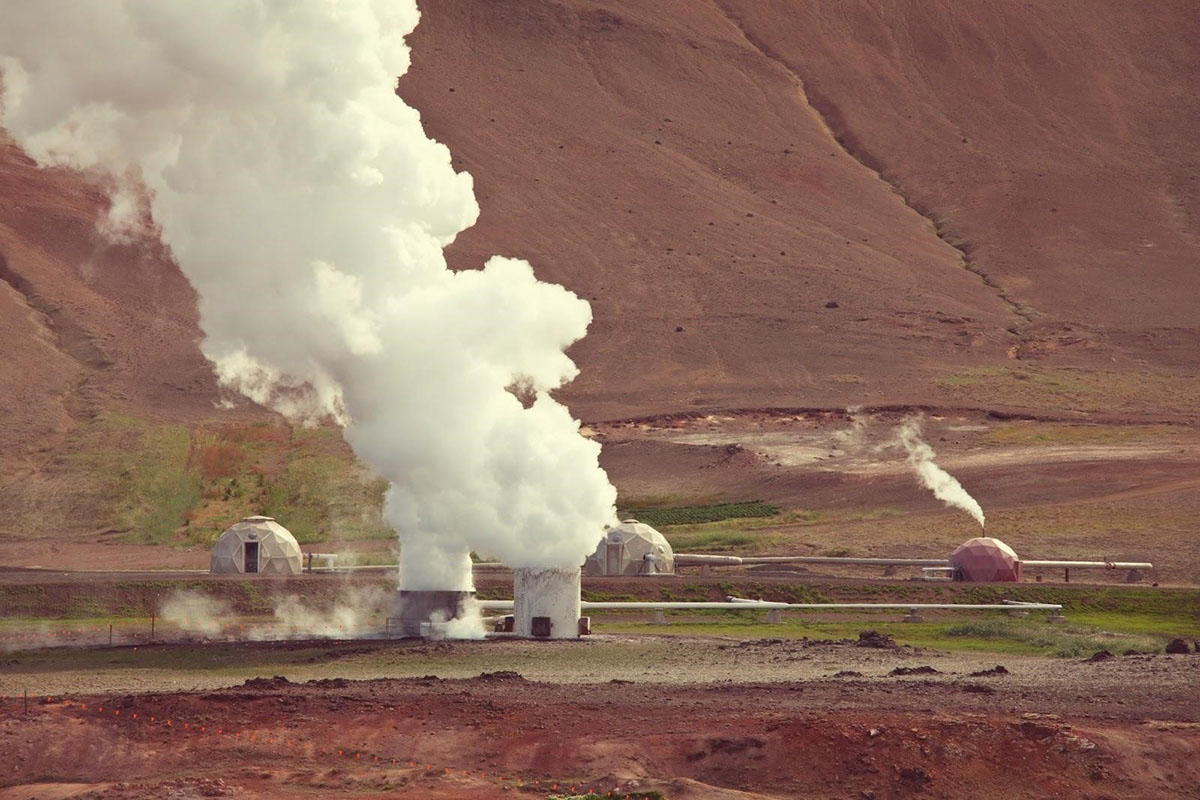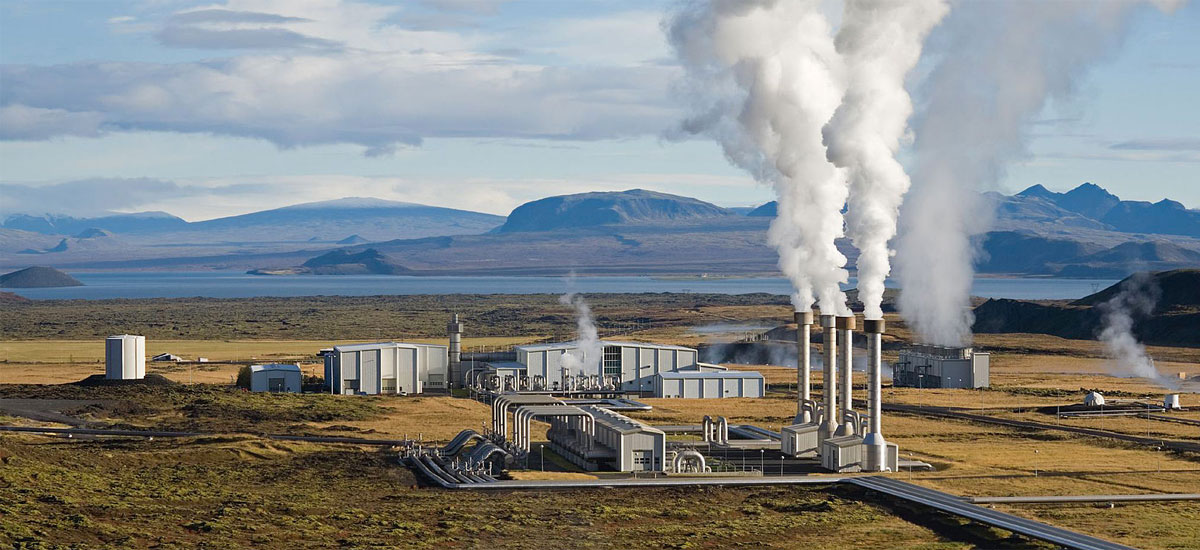In a significant move towards expanding the clean energy frontier, the U.S. Department of Energy (DOE) has announced an investment of up to $31 million across six innovative projects aimed at advancing geothermal energy throughout the United States. These initiatives are part of the broader Investing in America agenda under the Biden-Harris Administration, which focuses on reducing emissions, enhancing energy efficiency, and strengthening U.S. leadership in the clean energy sector.

The Promise of Geothermal Energy
Geothermal energy, often described as tapping into the “heat beneath our feet,” is a promising and largely untapped source of renewable energy. While geothermal resources currently generate about four gigawatts of electricity in the United States, a recent analysis by the DOE suggests that enhancing geothermal systems (EGS) could potentially provide at least 90 gigawatts of firm, flexible power to the U.S. grid by 2050—enough to power more than 65 million U.S. homes.
The concept behind EGS involves creating a humanmade underground reservoir to tap the heat stored in hot rocks deep within the Earth’s crust. By drilling into the subsurface and using wells to draw this heat to the surface in the form of steam or hot water, geothermal energy can be harnessed to generate electricity. However, constructing and operating these wells is costly, which is why the DOE is focusing on improving methods to reduce these costs and make geothermal electricity a more viable, cost-effective option.
U.S. Secretary of Energy Jennifer M. Granholm emphasized the importance of these advancements, stating, “Expanding the use of new and innovative geothermal technologies will allow the United States to continue pushing forward into the frontier of the clean energy revolution by using the heat beneath our feet.” She added, “These projects help achieve President Biden’s emissions reduction goals, strengthen U.S. competitiveness in this sector, and expand the types of clean and cost-effective energy solutions for American homes, businesses, and industry.”

>> In Other News: Purifire Energy Completes £2.7 Million Seed Round Funding
Innovations and Collaborations
The six projects selected for this funding represent a collaborative effort between academia, industry, and national laboratories. Each project brings a unique approach to overcoming the technical and economic challenges associated with geothermal energy production.
Clemson University in South Carolina will receive $4,880,182 to develop an AI-enabled, photoacoustic imaging tool designed to assess geothermal well integrity in high-temperature and high-pressure environments. This innovative approach eliminates the need for active cooling, potentially reducing costs and improving the reliability of geothermal wells.
In Texas, Innovative Downhole Solutions Inc. will be awarded $2,509,545 to create a durable ultrasonic measurement tool capable of operating continuously for 24 hours in extreme geothermal environments. This tool will assess wellbore construction materials and practices, providing crucial data to improve the longevity and safety of geothermal wells.
The Lawrence Berkeley National Laboratory in California is set to receive $2,016,000 to develop a tool specifically designed for geothermal borehole integrity evaluation. This tool will function effectively in extreme conditions without the need for downhole electronics, addressing one of the key challenges in geothermal energy extraction.
Los Alamos National Laboratory in New Mexico will use its $3,674,955 in funding to develop a high-resolution acoustics-based tool. This tool will provide high-fidelity data necessary for evaluating EGS components under the extreme conditions typical of geothermal reservoirs.
The largest portion of the funding, $10,000,000, will go to Schlumberger Technology Corporation in Houston, Texas. Schlumberger’s project involves developing a wireline tractor-conveyed system for long-term integrity modeling of cement and casing. This system will be critical in ensuring the long-term viability of geothermal wells.
Lastly, Project Development Solutions, Inc. in Bakersfield, California, will receive $7,899,807 to pilot a reservoir thermal energy storage (RTES) demonstration project at the Kern Front Oil Field. This project will pair subsurface geothermal reservoirs with a steam system and process heat off-taker, showcasing the potential of RTES to store thermal energy directly in underground reservoirs without the need for electricity.
The Road Ahead
These projects are not just about advancing technology; they are about reshaping the future of energy in the United States. By focusing on innovations that reduce the costs and improve the efficiency of geothermal energy systems, the DOE is laying the groundwork for a future where geothermal energy plays a significant role in the nation’s energy mix.
Reservoir thermal energy storage, in particular, represents a game-changing technology. Unlike traditional energy storage batteries, which typically store electrical energy, RTES can store thermal energy directly in underground reservoirs for extended periods—up to 100 hours or more. This capability is especially valuable for industries such as chemicals, food production, and forest products, where most of the energy consumed is used to generate heat for transforming materials into useful products.
The RTES demonstration project led by Project Development Solutions will illustrate how this technology can decarbonize industry and drive the United States toward its goal of achieving a net-zero-emissions economy by 2050. The DOE’s commitment to these projects reflects the broader vision of the Biden-Harris Administration to not only reduce emissions but also to create a more sustainable and resilient energy future for all Americans.
These initiatives are funded by the DOE’s Geothermal Technologies Office within the Office of Energy Efficiency and Renewable Energy, marking another step forward in the ongoing effort to make clean, renewable energy accessible and affordable for everyone.
As these projects move from development to implementation, they will serve as a testament to the power of innovation and collaboration in addressing the critical energy challenges of our time.
Subscribe to the newsletter
Daily decarbonization data and news delivered to your inbox
Follow the money flow of climate, technology, and energy investments to uncover new opportunities and jobs.
Latest issues
-
Air Liquide Just Solved Hydrogen’s Hardest Problem
Inside This Issue ⚗️ Air Liquide's Ammonia Cracker Unlocks Hydrogen Trade 🤝 BASF and ExxonMobil Join Forces to Advance Low - Emission Hydrogen Through Methane Pyrolysis Technology 🔥 Haffner Energy...
-
Texas Bypasses EPA, Unlocks Billion-Dollar CCS Rush
Inside This Issue ⛽ Texas Bypasses EPA, Unlocks Billion-Dollar CCS Rush 🏭 Proposed Blue Ammonia Plant In Ingleside Moves Forward After Heated Debate 💡 Hydrogen Could Be The Secret To Unlimited Ene...
-
Spiritus Targets $100 Per Ton Carbon Capture Breakthrough
Inside This Issue 🌍 Spiritus Targets $100 Per Ton Carbon Capture Breakthrough 🌡️ Removing CO2 From Atmosphere Vital To Avoid Catastrophic Tipping Points, Leading Scientist Says 🛫 DG Fuels Appoints...
Company Announcements
-
Peaks Renewables Partners With Biogas Development to Expand Idaho Production
Peaks Renewables has teamed up with Biogas Development to enhance renewable gas production at the Hidden Hollow Energy Landfill Gas Project in Boise, Idaho. Peaks is making a preferred equity inve...
-
Funding led by Azolla Ventures with Chevron Technology Ventures and Freeflow Ventures positions Erg Bio to advance its cost-competitive bioindustrial platform as the U.S. prioritizes energy securit...
-
Plug Power Hosts Seventh Annual Symposium Highlighting Hydrogen’s Role in Energy Independence
SLINGERLANDS, N.Y., Nov. 18, 2025 (Globe Newswire) — Plug Power Inc. (NASDAQ: PLUG), a global leader in hydrogen solutions for the hydrogen economy, is hosting its seventh annual Plug Power Symposi...
-
NEWPORT BEACH, Calif. & OXNARD, Calif. (Business Wire) — Clean Energy Fuels Corp. (Nasdaq: CLNE) announced that it was awarded a contract to design and build a new hydrogen fueling station for ...